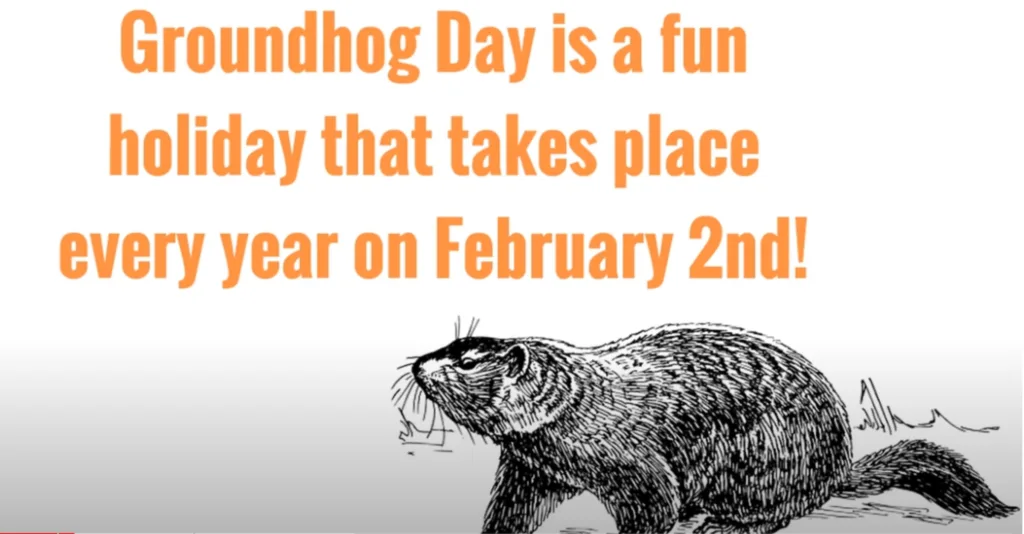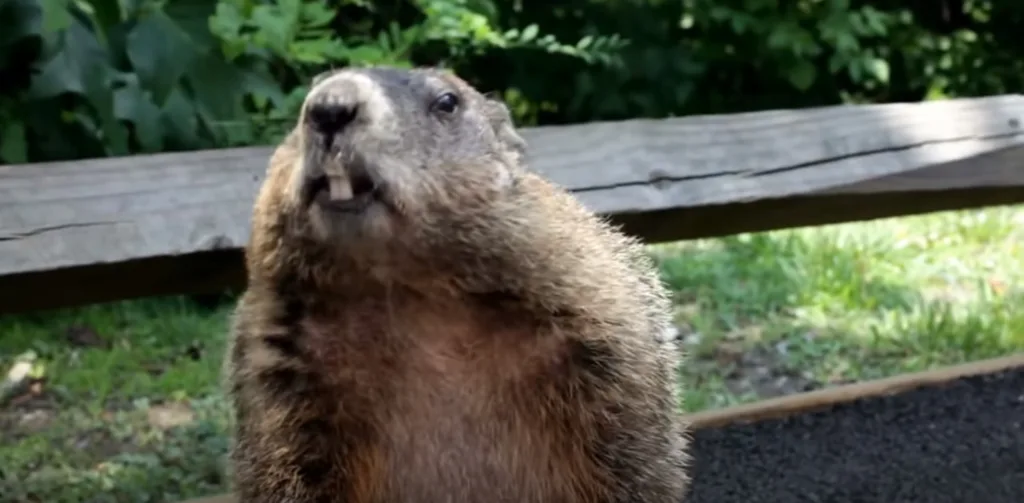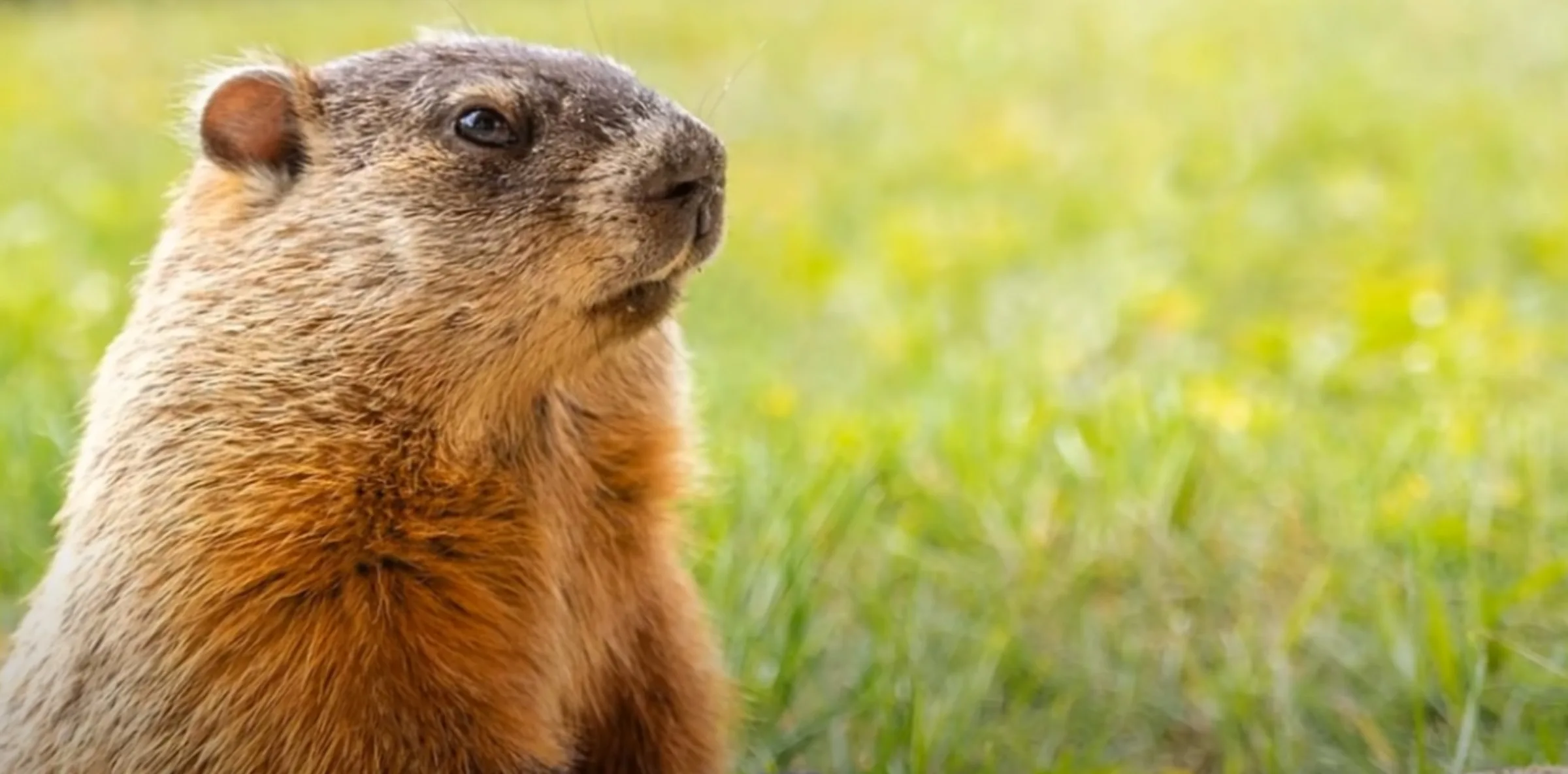Groundhog Day” is a traditional event celebrated on February 2 each year in the United States and Canada. The most famous Groundhog Day celebration takes place in Punxsutawney, Pennsylvania, where a groundhog named Punxsutawney Phil is believed to predict the weather for the coming weeks.
Groundhog Day Tradition :

Prediction Process: According to folklore, if a groundhog emerges from his burrow on February 2 and sees his shadow due to clear weather, he will retreat back to his burrow, predicting six weeks of winter.
If its shadow is not visible due to cloudy weather during the day, it is believed that spring will come early.
Punxsutawney Phil: Punxsutawney Phil is the most famous groundhog associated with this tradition. Thousands of people gather in Punxsutawney to watch Phil’s prediction.
The incident has attracted widespread attention, and was even depicted in the 1993 comedy film “Groundhog Day”, starring Bill Murray.
Cultural impact: “Groundhog Day” has become a cultural reference beyond weather forecasting.
The term is often used metaphorically to describe situations where events are repeated in a monotonous or repetitive manner.
Groundhog Day Movie: The film “Groundhog Day”, directed by Harold Ramis and starring Bill Murray, focuses on a man who remembers the same day over and over again.
It has become a classic comedy and is often associated with the ideas of personal growth, redemption and the value of time.
While This is not an official holiday, it has become a fun and widely recognized event in North America, with various celebrations and events taking place in different areas.
The tradition of Groundhog Day has its roots in ancient European weather lore, specifically a celebration known as Candlemas Day.
Candlemas, celebrated on February 2, marks the midpoint between the winter solstice and the spring equinox.
Folklore suggested that clear weather on Candlemas Day meant a long winter, while cloudy weather indicated early spring.
When European settlers arrived in what is now the United States, they brought this tradition with them. However, attention turned to predicting the weather based on the behavior of native groundhogs, also known as woodchucks.
The first official Groundhog Day in the United States took place in Punxsutawney, Pennsylvania in 1887.
The Punxsutawney Groundhog Club organized the event and they announced that Punxsutawney Phil, the resident groundhog, was the official weather forecaster.
Over the years the tradition grew, gaining popularity and attracting media attention.
The connection between Groundhog Day and the prediction of an early spring or long winter remains a light-hearted and amusing aspect of the tradition.
Punxsutawney Phil celebrations are now widely covered by the media, and many other towns and cities across North America have adopted similar celebrations with their local groundhogs.
The cultural impact of Groundhog Day expanded further with the release of the 1993 film “Groundhog Day” starring Bill Murray.
The film, directed by Harold Ramis, has become a classic comedy and has contributed to the enduring popularity of the Groundhog Day tradition.
The special event on Groundhog Day is to observe groundhogs emerging from their burrows to predict the weather.
The most famous Groundhog Day celebration takes place in Punxsutawney, Pennsylvania, where a groundhog named Phil is the star of the show.
Here is a typical sequence of events on Groundhog Day:
Emergence of the Morning :

On the morning of February 2, a crowd gathers in Punxsutawney, eagerly awaiting the groundhog’s prophecy. Phil is brought to Gobblers Knob, a wooded area just outside Punxsutawney.
Weather Prediction: If the groundhog sees his shadow due to clear weather, winter is expected to last six more weeks. On the other hand, if its shadow is not visible due to cloudy weather, early spring is predicted.
Announcement: The prophecy is then announced to the crowd, and it is widely publicized through media outlets. Phil’s forecasts are often presented in a playful and entertaining manner.
Festivities: Punxsutawney’s events include various festivals, parades, and activities for the gathered crowds. The festival has become a community and cultural event, attracting visitors and media attention from around the world.
It is important to note that although Groundhog Day and weather predictions are light-hearted and fun traditions, they are not scientifically reliable indicators of future weather patterns.
This event has become a cultural phenomenon and a source of entertainment, people participate in the festival to enjoy this unique celebration.
Groundhog Day itself is not inherently political; It is a cultural tradition that has its roots in meteorological lore. The event revolves around the light-hearted and folkloric prediction of the arrival of spring based on the behavior of groundhogs.
However, like many cultural events, it can sometimes be associated with political figures or used in a political context.
For example, politicians may participate in Groundhog Day celebrations or use the tradition as a theme in their speeches or public appearances, especially if they are from areas where Groundhog Day is widely celebrated.
Additionally, during Groundhog Day events there may be discussion or commentary about climate change and its potential impact on seasonal weather patterns, which may have political overtones.
However, in general, Groundhog Day is more about community celebrations, entertainment, and cultural traditions rather than being directly linked to political ideologies or issues.
Any political connection is likely to be more symbolic or related to local and regional customs rather than a central theme of the tradition.

